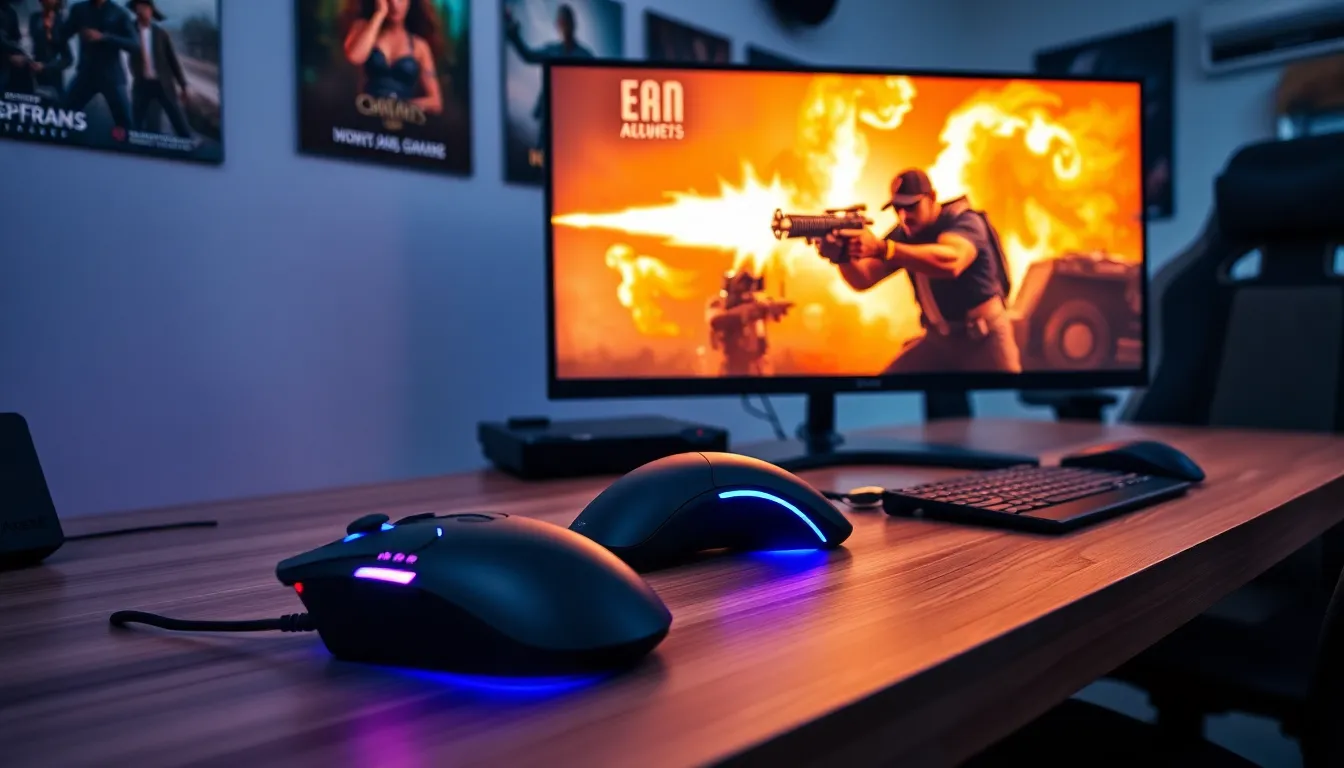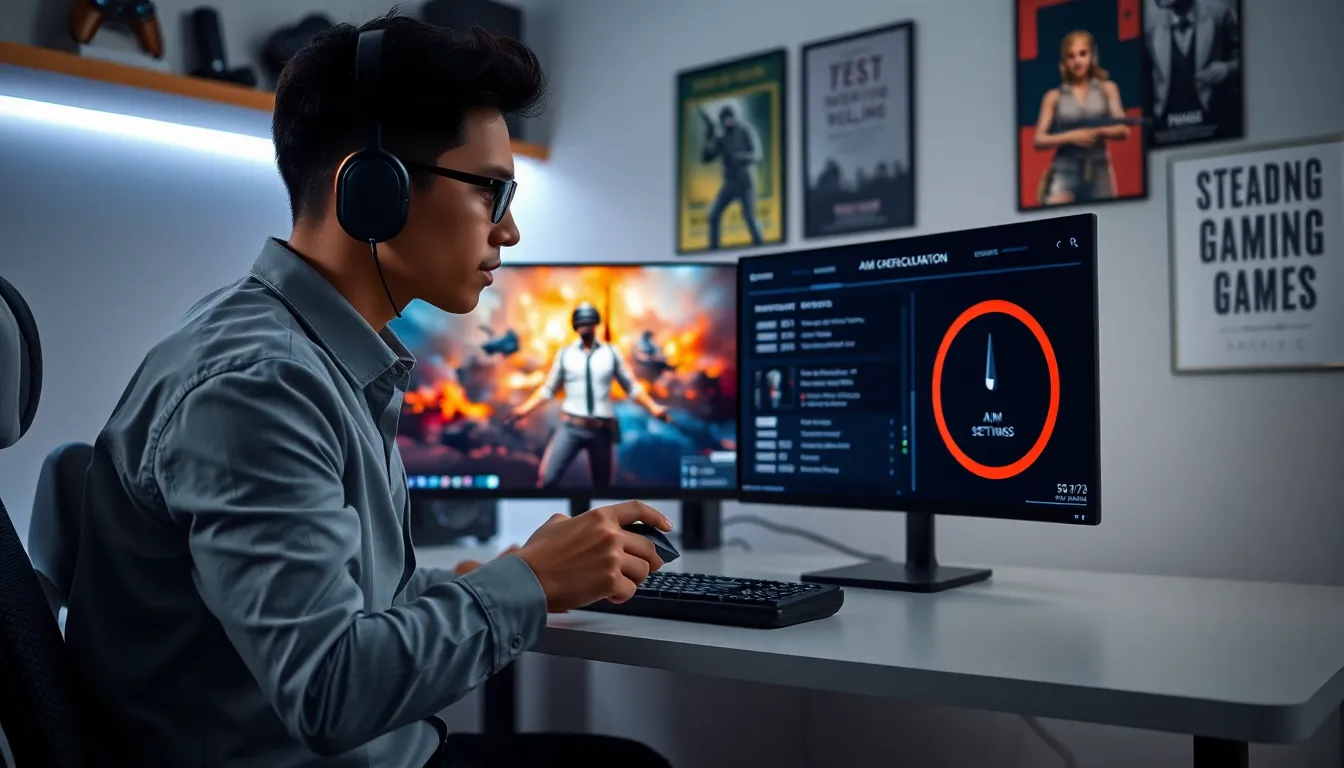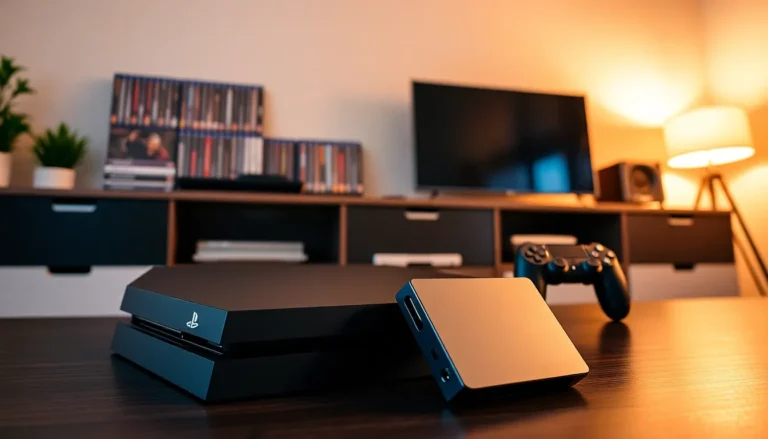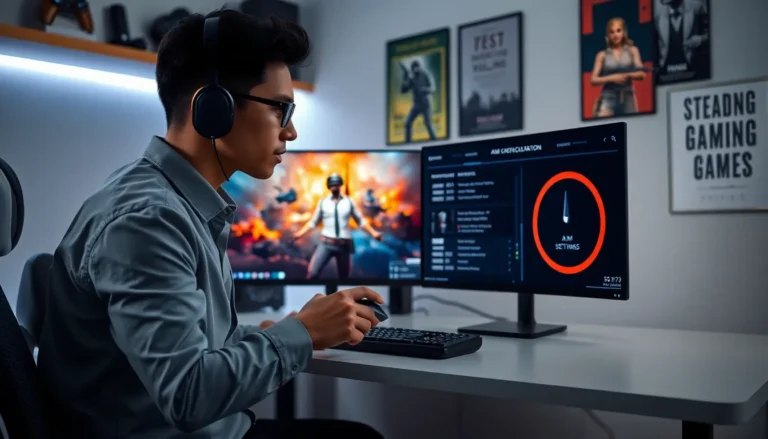Table of Contents
ToggleHave you ever watched a pro player in PUBG and wondered how they snap onto targets like they have a sixth sense? Well, they just might be leveraging aim acceleration. But don’t worry, while it may sound like rocket science, grasping this concept can elevate your gameplay beyond just mediocre. Aim acceleration isn’t about leveling the playing field: it’s about giving you rocket boosters under your mouse cursor. Let’s jump into this fascinating topic and figure out how to use aim acceleration to your advantage.
Understanding Aim Acceleration

Aim acceleration, in the simplest terms, refers to how fast your aim moves based on mouse or controller movement. Unlike linear sensitivity, aim acceleration ramps up your aiming speed the more swiftly you move your mouse or stick. Imagine you’re in an intense shootout, and the enemy is zigzagging like they’re in a dance-off. When you whip your mouse to follow, a proper aim acceleration setting allows your aim to adjust more rapidly than if you just represented speed with a straight line. Understanding this principle can give you that crucial edge in fire fights.
To visualize it better, think about riding a bicycle. If you pedal super fast, you’ll go much faster than when you’re taking it slow. Similarly, a high aim acceleration setting means slight movements won’t send your reticle across the screen, but fast movements will have a more profound effect, helping to land those critical shots on the fly.
The Importance of Aim Acceleration for Players
Why is aim acceleration essential for players? It’s all about precision and responsiveness. In PUBG, split-second decisions can determine whether they reign supreme or eat dirt. Aim acceleration allows players to maintain finer control over their aim during gradual movements and ramp up responsiveness when the chaos ensues. This balance can lead to a more adaptive gameplay style.
Consider the pros: they often showcase their insane tracking skills, swooping their cursor from enemy to enemy with remarkable fluidity. This prowess isn’t just magical intuition: it’s their mastery over mouse settings, especially aim acceleration. Getting this right helps in tracking moving targets, making those nail-biting long-range engagements feel slightly less intimidating.
In a nutshell, the right aim acceleration can turn a timid shooter into a confident marksman who’s ready to crank up the heat on any opponent.
Configuring Aim Acceleration Settings
Setting up aim acceleration isn’t a one-size-fits-all process, but here’s a general pathway to get started. First, players should navigate to their game settings, typically found under controls or mouse settings. They’ll likely find an option labeled ‘Aim Acceleration.’
Here are a few configurations to consider:
- Start Low: It’s advisable to begin with a lower acceleration setting. Think of it as dipping your toes into the water. It’s easier to heighten sensitivity later than to scale it back.
- Adjust Gradually: Incrementally increase your settings while testing each new adjustment in a safe environment, like the training ground or a casual match.
- Test, Test, and Test Again: Keep track of your performance. As they tweak their settings, players should assess how well they’re landing shots, especially under pressure.
- Check Out Mouse Software: If they’re using a gaming mouse, many come with their own software that allows finer adjustments to overall sensitivity and acceleration. Use this resource effectively for personalized settings.
Remember, take it slow. Like a fine wine, aim acceleration settings improve with patience.
Tips for Mastering Aim Acceleration
Once configured, mastering aim acceleration involves practice and some strategic approaches.
- Practice Regularly: The more one plays, the more comfortable they’ll become with the settings. Incorporate aim training maps or tools that focus on tracking and flicking.
- Be Mindful of Movement: Learn how character movement affects aim. Understand that certain actions, like jump shots or crouch movements, require different aim adjustments.
- Vary Your Practice: Don’t just focus on headshots: practice shooting at different distances and engage moving targets to mimic real in-game scenarios.
- Keep a Steady Hand: Maintain steadiness while adjusting your aim. Distractions can derail their aim more than an unsteady hand.
- Analyze Your Replays: Looking back at gameplay recordings can reveal patterns in aiming that need improvement. Are positions or enemy types causing repeated misses?
Using these tips, any player can turn aim acceleration from an abstract concept into a tangible advantage.
Common Myths About Aim Acceleration
Myths surrounding aim acceleration often mislead players, creating confusion rather than clarification.
- Myth: Higher Acceleration Always Means Better Aim: This isn’t accurate: higher values can lead to erratic movements. It’s about finding the right balance that suits personal playstyle.
- Myth: Aim Acceleration is Only for Pros: Amateurs can benefit significantly too. Beginners can and should explore aim acceleration as they develop their skills.
- Myth: It’s Too Complicated to Adjust: Sure, it may take some fine-tuning, but many find it manageable with step-by-step guidance and a bit of trial and error.
- Myth: Aim Acceleration Is Just for Mouse Players: Not true. Controller users can also adjust their settings and improve performance through skills like aim acceleration.
Clearing these myths paves the way for a better understanding of how crucial aim acceleration is for crisp, reliable aiming.





